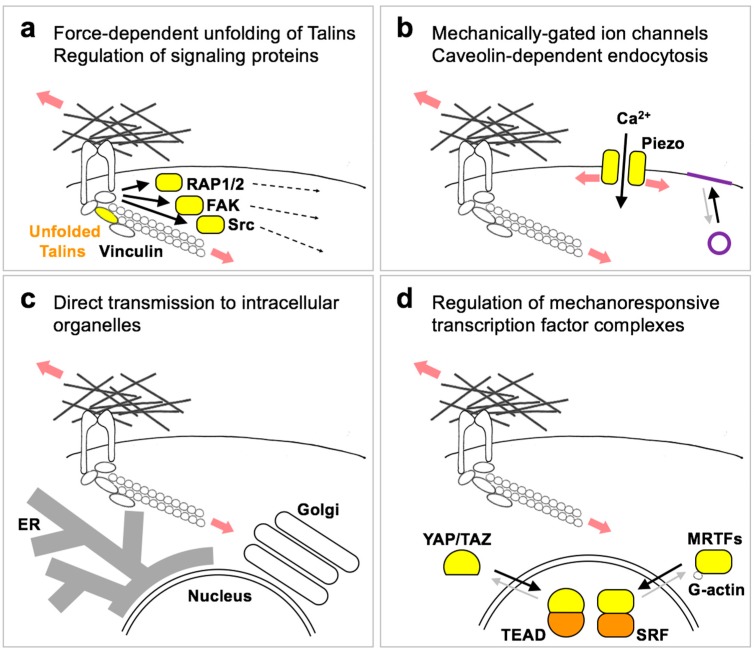Figure 3.
A simplified scheme of ECM mechanotransduction mechanisms. Resisting forces provided by ECM stiffness regulate multiple signaling mechanisms, including (a) direct force-dependent unfolding of proteins at adhesion structures (Talins), leading to recruitment of adaptor proteins (Vinculin) and to the regulation of signaling proteins such as GTPases (Rap1/2) and kinases (FAK and Src), which then relay the signal to the rest of the cell (dashed arrows). (b) Tension of the plasma membrane can induce the opening of mechanically-gated ion channels such as Piezo1/2, and may influence the rate of Caveolin-dependent endocytosis (indicated in purple) as a feedback mechanism to accommodate membrane stretching. (c) Extracellular tension can be directly transmitted to intracellular structures and organelles, including the nucleus, the endoplasmic reticulum (ER) and possibly the Golgi apparatus, regulating their functions (see text). (d) Extracellular forces also regulate gene transcription by activating transcription factors such as the YAP/TAZ-TEAD and MRTF-SRF complexes. regulation of YAP/TAZ entails multiple parallel mechanisms (see text), while MRTFs activity is directly regulated by the ratio between filamentous (F-actin) and monomeric/globular actin (G-actin).

